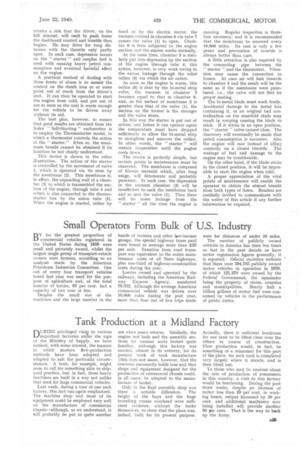Tank Production at a Midland Factory
Page 35

If you've noticed an error in this article please click here to report it so we can fix it.
DURING privileged visite to various important factories unZer the aegis of the Ministry of Supply, we have noticed, with some interest, the manner in which modern flow-production methods have been adopted and adapted to suit the particular circumstances. A tank, for example, might seem to call for something akin to shipyard practice, but, in fact, these heavy machines are built in a way not unlike that used for large commercial vehicles.
Last week, during a tour of one such factory, this fact was again emphasized. The machine shop and most of its equipment could be employed very well on the manufacture of commercial chassis—although, as we understand, it will probably be put to quite another use when peace returns. Similarly, the engine test beds and the assembly sections for various units looked quite familiar, although this factory was erected, almost in its entirety, for its present work of tank manufacture (this does not mean, however, that the converse necessarily holds true and that shops and equipment designed for the production of commercial chassis could, in all cases, he adapted to the manufacture of tanks).
Only in the final assembly shop was there a notable difference. The height of the bays and the huge travelling cranes overhead were sufficient evidence, without the tanks themselves, to show that the place was, indeed, built for its present purpose. Actually, there is sufficient headroom for one tank to be lifted clear over the others in course of construction. Flow production would, in fact, be something of a misnomer for this part of the place, for each tank is completed very largely where it stands, and is then lifted out.
To those who may be anxious about the rate of production of armaments in this country, a visit to this factory would be heartening. During the past three weeks, despite an increase of rather less than 20 per cent, in working hours, output increased by 30 per cent. and additional machinery now being installed will provide another 50 per cent. That is the way to back up the Army.




























































